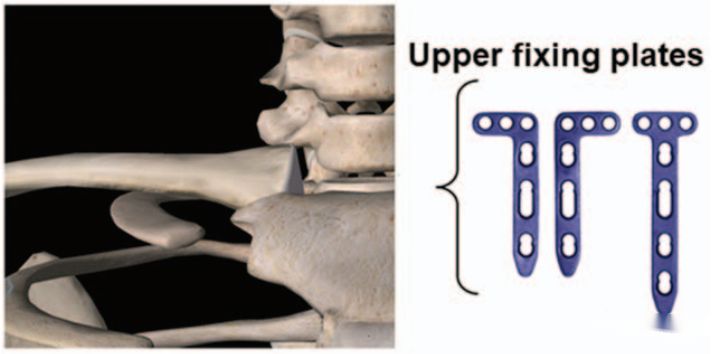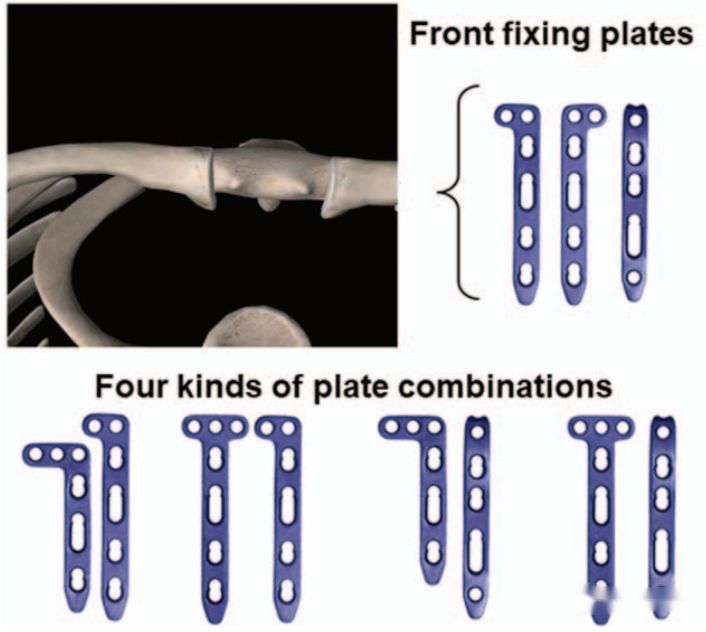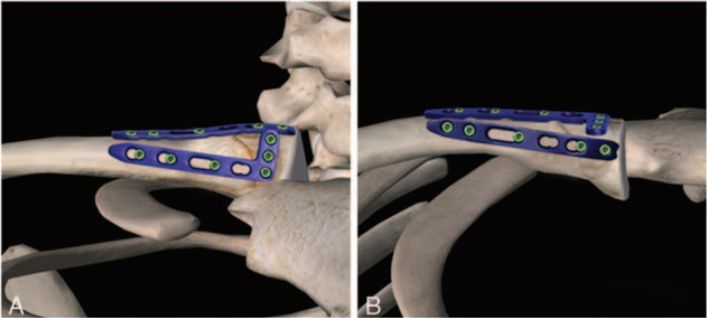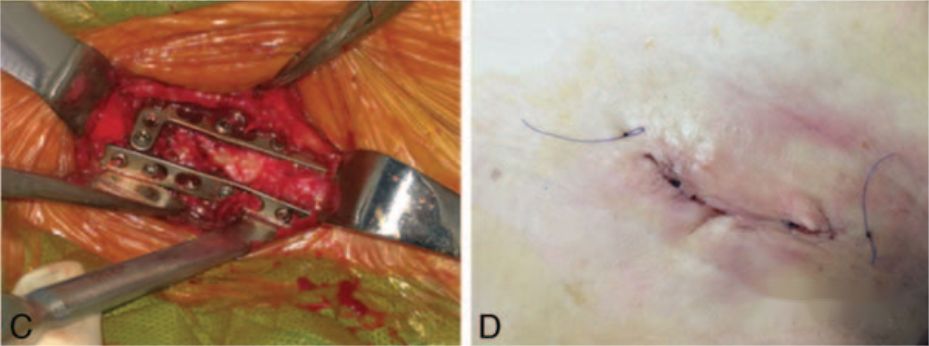يُعد كسر الترقوة من أكثر الكسور شيوعًا، إذ يُمثل ما بين 2.6% و4% من إجمالي الكسور. ونظرًا للخصائص التشريحية لمنتصف عظمة الترقوة، فإن كسور هذا المنتصف هي الأكثر شيوعًا، حيث تُمثل 69% من كسور الترقوة، بينما تُمثل كسور الطرفين الوحشي والإنسي للترقوة 28% و3% على التوالي.
تُعدّ كسور الطرف الإنسي للترقوة نوعًا نادرًا نسبيًا من الكسور، على عكس كسور منتصف عظم الترقوة الناتجة عن إصابات مباشرة في الكتف أو انتقال القوة من إصابات تحمل الوزن في الطرف العلوي. في الماضي، كان العلاج المتبع لكسور الطرف الإنسي للترقوة عادةً تحفظيًا. مع ذلك، أظهرت الدراسات أن 14% من المرضى الذين يعانون من كسور مُزاحة في الطرف الإنسي قد يُصابون بعدم التئام العظم المصحوب بأعراض. لذا، في السنوات الأخيرة، اتجه المزيد من الباحثين نحو العلاج الجراحي للكسور المُزاحة في الطرف الإنسي التي تشمل المفصل القصي الترقوي. إلا أن شظايا الطرف الإنسي للترقوة عادةً ما تكون صغيرة، وهناك قيود على التثبيت باستخدام الصفائح والبراغي. ولا يزال تركيز الإجهاد الموضعي يُمثل تحديًا لجراحي العظام فيما يتعلق بتثبيت الكسر بفعالية وتجنب فشل التثبيت.
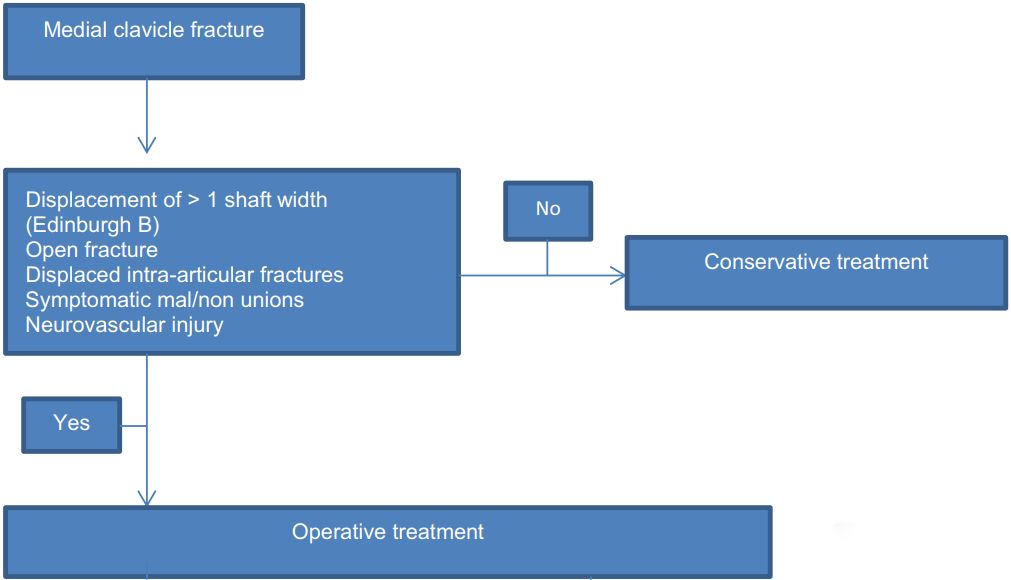
1. انقلاب الطرف السفلي للترقوة
يتشابه الطرف البعيد لعظم الترقوة مع الطرف القريب في بنيته التشريحية، إذ يتميز كلاهما بقاعدة عريضة. ويحتوي الطرف البعيد لصفيحة تثبيت الترقوة الضاغطة (LCP) على عدة ثقوب لولبية للتثبيت، مما يسمح بتثبيت الجزء البعيد من العظم بشكل فعال.
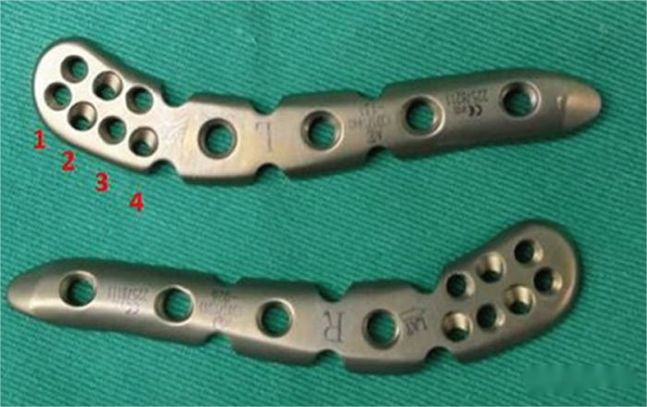
نظراً للتشابه البنيوي بينهما، قام بعض الباحثين بوضع صفيحة فولاذية أفقياً بزاوية 180 درجة عند الطرف البعيد لعظم الترقوة. كما قاموا بتقصير الجزء المستخدم أصلاً لتثبيت الطرف البعيد لعظم الترقوة، ووجدوا أن الزرعة الداخلية تتناسب بإحكام دون الحاجة إلى تشكيلها.
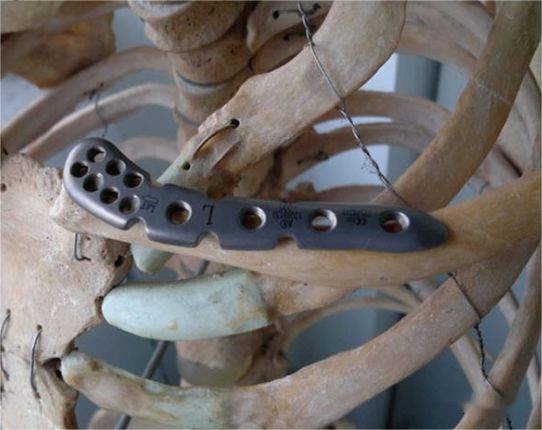
وقد تبين أن وضع الطرف البعيد لعظم الترقوة في وضع مقلوب وتثبيته بصفيحة عظمية على الجانب الإنسي يوفر ملاءمة مرضية.
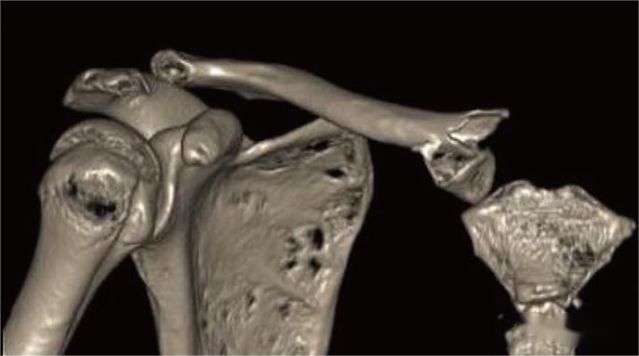
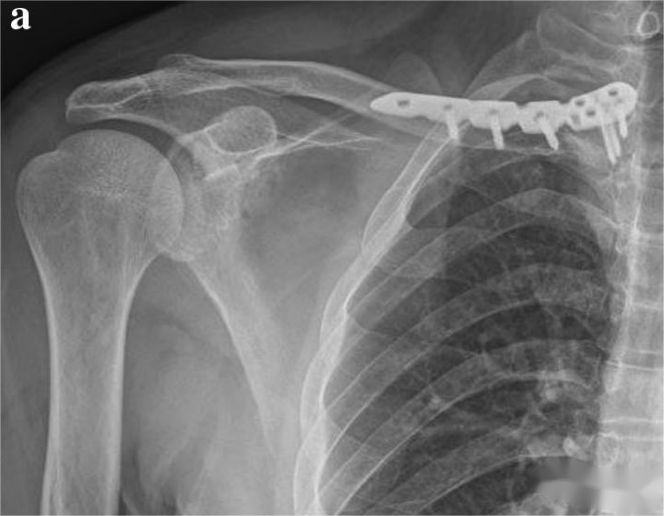
في حالة مريض يبلغ من العمر 40 عامًا مصاب بكسر في الطرف الإنسي لعظم الترقوة الأيمن، تم استخدام صفيحة فولاذية مقلوبة للطرف البعيد من عظم الترقوة. وأظهر فحص المتابعة بعد 12 شهرًا من الجراحة تحسنًا ملحوظًا في التئام الكسر.
تُعدّ صفيحة التثبيت الضاغطة المقلوبة للطرف البعيد من الترقوة (LCP) طريقة شائعة الاستخدام للتثبيت الداخلي في الممارسة السريرية. وتكمن ميزة هذه الطريقة في تثبيت الجزء العظمي الإنسي بواسطة عدة براغي، مما يوفر تثبيتًا أكثر أمانًا. مع ذلك، تتطلب هذه التقنية وجود جزء عظمي إنسي كبير بما يكفي لتحقيق أفضل النتائج. فإذا كان الجزء العظمي صغيرًا أو كان هناك تفتت داخل المفصل، فقد تتأثر فعالية التثبيت.
ثانياً: تقنية التثبيت العمودي بالصفيحة المزدوجة
تُعدّ تقنية الصفيحتين طريقة شائعة الاستخدام لعلاج الكسور المُفتتة المُعقدة، مثل كسور عظم العضد البعيدة، والكسور المُفتتة في عظمي الكعبرة والزند، وما إلى ذلك. عندما يتعذر تحقيق تثبيت فعال في مستوى واحد، تُستخدم صفيحتان فولاذيتان مزدوجتان للتثبيت العمودي، مما يُنشئ بنية مستقرة في مستويين. ومن الناحية الميكانيكية الحيوية، يُوفر التثبيت بالصفيحتين مزايا ميكانيكية مقارنةً بالتثبيت بالصفيحة الواحدة.
لوحة التثبيت العلوية
صفيحة التثبيت السفلية وأربعة تركيبات من تكوينات الصفيحة المزدوجة
تاريخ النشر: 12 يونيو 2023





